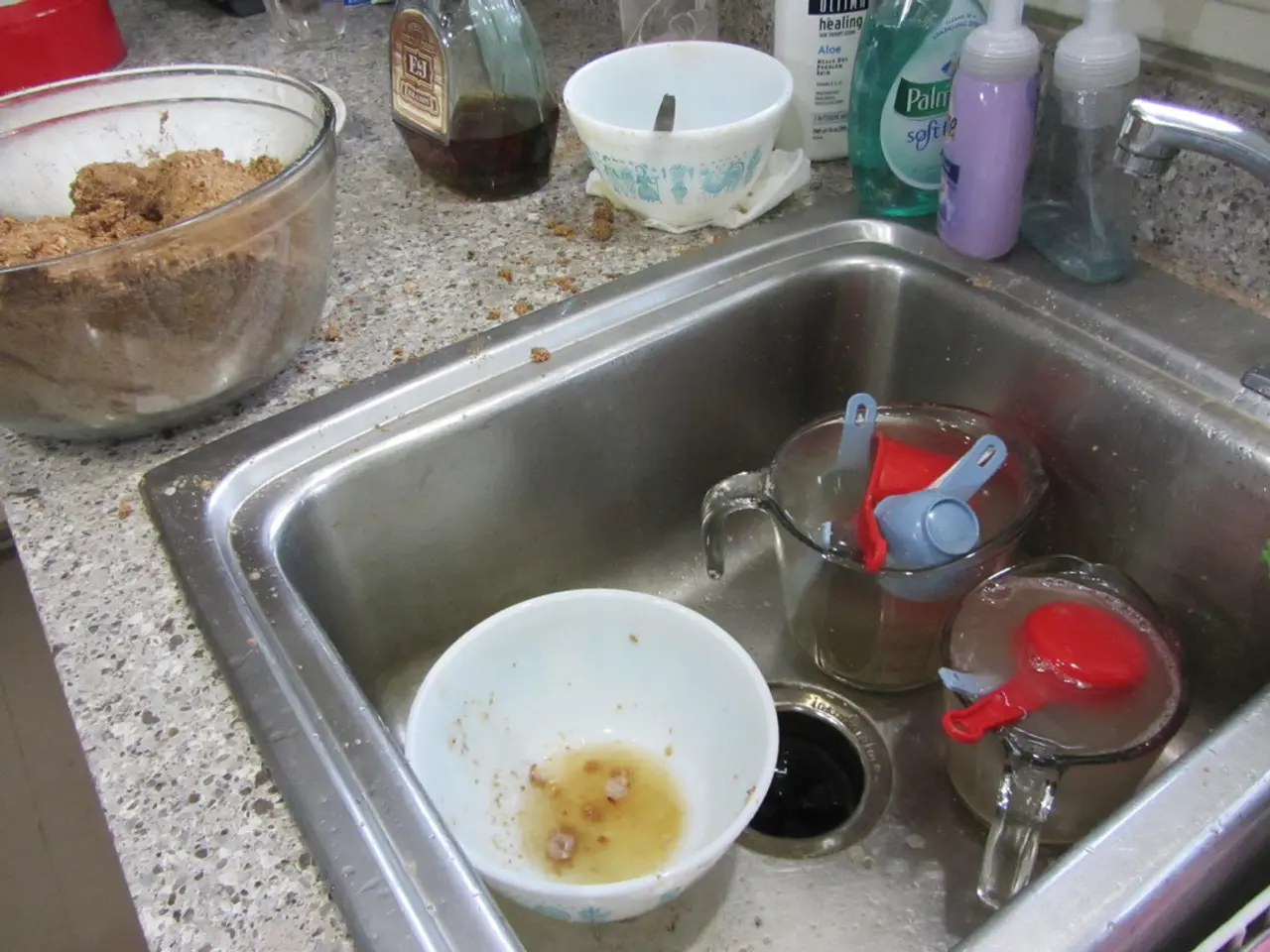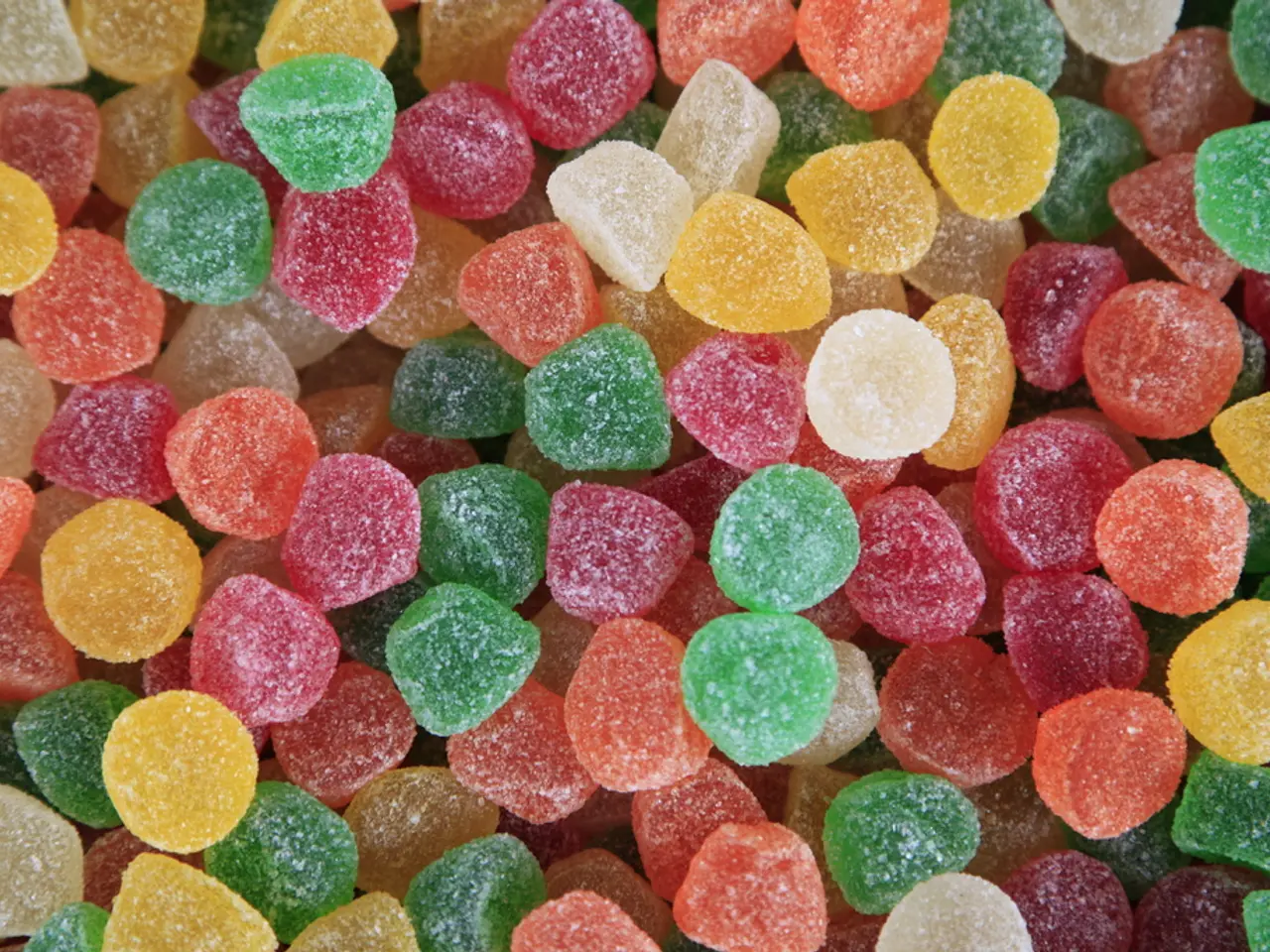Vomiting Yellow in Dogs: Causes and Solutions
Having a pet can sometimes be as confusing as raising a toddler who can't tell you what's bothering them. So, when your furry friend vomits, especially if it's the sickly yellow hue, it's understandable to freak out a little. But fear not, this handy guide has got your back! Let's break down the yellow dog vomit situation for you.
From Benign to Serious: What's Your Dog's Yellow Puke Saying?
When your dog tosses their cookies, it might just be because they have an upset tummy. Don't panic just yet – observe your pooch for other alarming signs and frequent bouts of throwing up. And remember, never ignore the color and contents of the puke.
Yellow vomit usually means the stomach's contents have been emptied, leaving only the yellowish bile behind. But if you notice any blood or a red tinge, hit up your vet stat – this could indicate bleeding in the digestive system, which can escalate into some serious pain.
If your pet vomits once, take a breather. Keep an eye on them for the next 24 hours, and monitor for other weird behaviors. Pay close attention for any follow-up vomiting or other symptoms like diarrhea, lethargy, loss of appetite, weakness, or collapse. If you spot any of these, book an appointment with your vet as soon as possible. Don't wait longer than 48 hours, as conditions can quickly go from bad to worse (and more expensive to treat).
Varieties of Yellow Vomit
Yellow vomit doesn't always look the same. Sometimes it'll be foamy, sometimes mucusy, and sometimes a watery mess, depending on whether your dog has recently chugged some water before puking. Rest assured, even watery yellow vomit can still be bile – it's just less common.
Normal vs. Problematic: The Common Suspects
When your dog vomits yellow, it's most likely bile – a fluid produced by the liver to aid digestion. But there are other possible explanations, too:
- Bilious Vomiting Syndrome (BVS): This condition happens when bile backs up into an empty stomach, causing ruptures and vomiting. Doggos with BVS usually vomit early in the morning or late at night and are otherwise healthy and happy.
- Empty Stomach: Going without food for too long can cause bile to accumulate and irritate the stomach, often resulting in nighttime or early morning vomiting.
- Food Allergies or Intolerances: An allergy or intolerance to certain ingredients can lead to puking, sometimes accompanied by yellow bile.
- GI Disorders: More severe gut ailments like inflammation, infections, ulcers, or systemic diseases may cause persistent yellow bile vomiting.
- Liver or Gallbladder Diseases: These can cause recurrent yellow bile vomiting, and your pup might also exhibit other signs like lethargy, lack of appetite, weight loss, or jaundice.
- Pancreatitis and Other Systemic Illnesses: These can cause yellow bile vomiting, along with other symptoms like abdominal pain, depression, or fever.
Treating Your Dog's Yellow Puke
Treating your dog's yellow vomit depends on its cause, so prepare to give your vet a call. In many cases, your pup should fast for 12 hours to let their stomach settle. Afterward, offer them some bland food and watch to see if they eat it up – if they do, you've got nothing to worry about! But if they refuse, it's time to pay your vet a visit.
Remember, it's not recommended to fast your pup for too long, especially if they're a pup. Dehydration is a significant concern, so if your little one's vomiting, it's essential to go to the vet sooner rather than later.
A vet visit may require diagnostic tests like blood work, urine and fecal tests, and radiographs to figure out the root cause of the problem. Once the diagnosis is in, your vet will start treating the specific issue, which could involve medication, surgery, hospitalization, or switching your pup to a bland, easily digestible prescription diet.
Preventing Your Dog's Puke Party
To minimize the risk of your dog vomiting, keep anything they shouldn't eat or chew stowed away. This includes people food, trash, and yucky objects from the backyard. Supervise them carefully, especially when exploring new areas or playing with toys. And remember, vaccinations, annual checkups, and proper diet are vital for keeping your pet healthy.
In conclusion, occasional yellow bile vomiting can be a sign of an empty stomach or bilious vomiting syndrome, both of which can be managed through dietary changes. However, consistent or severe vomiting, or other concerning symptoms, require medical attention to diagnose and treat possible underlying issues. So, keep an eye on your puke-prone pal, and don't hesitate to contact your vet if you're unsure or if things take a turn for the worse.
Stay in the know about your pet's health – LifeHack for Pet is here to help!
References:[1] Merck Manual Professional Veterinary Consultation. (2020). Bilious vomiting syndrome in dogs. https://www.merckvetmanual.com/digestive-system/all-about-vomiting-in-dogs/bilious-vomiting-syndrome-in-dogs
[2] VCA Animal Hospitals. (2020). Why Is My Dog Vomiting Bile? https://vcahospitals.com/know-your-pet/why-is-my-dog-vomiting-bile
[3] The Labrador Site. (2017). 8 Reasons Why Labradors Vomit. https://www.thelabradorsite.com/labrador-vomiting/
[4] PetMD. (2020). Why Does My Dog Vomit Bile? https://www.petmd.com/dog/slideshows/why-does-my-dog-vomit-bile-43271
[5] Dogster. (2018). Bilious Vomiting Syndrome in Dogs. https://dogster.com/lifestyle/bilious-vomiting-syndrome-causes-treatment-symptoms-prevent-dogs
- A proper understanding of mental health is vital, as it can help pet owners to recognize when their furry friends might be feeling unwell and seek appropriate assistance from veterinarians in a timely manner.
- Science has demonstrated that a pet's overall health, including mental health, contributes significantly to a person's health-and-wellness. Therefore, considering mental health as an integral part of a pet's well-being is essential for maintaining a healthy and balanced lifestyle.








